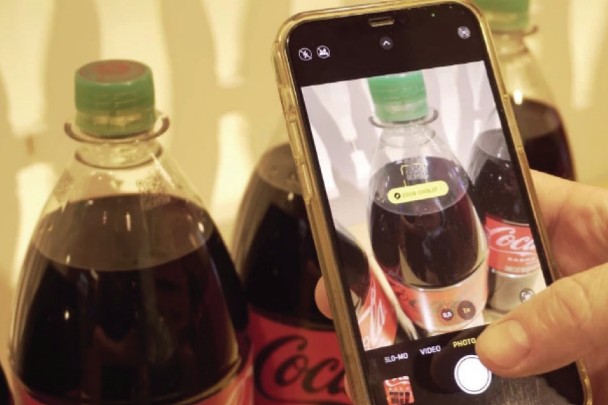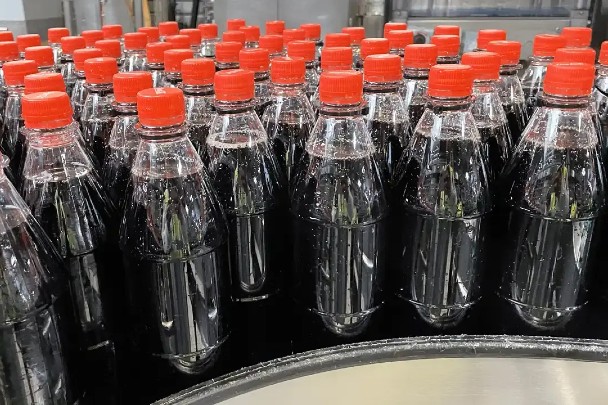With a commitment to innovation and responsible corporate practices, Coca-Cola Latin America’s increased focus on the lifecycle of bottles and the environmental impact of consumer choices are key elements of the brand's drive to create a more sustainable future.
Through the application of QR codes powered by GS1, Coca-Cola has made significant strides in advancing its refillable bottle initiative, reducing waste and demonstrating how GS1 standards can drive efficiency and traceability in production and supply chains.
Goals for a greener future
In late 2022, Coca-Cola unveiled an ambitious plan under its global ‘World Without Waste’ initiative, setting a target to ensure at least 25 per cent of its beverages are sold in refillable or returnable bottles by 2030. Coca-Cola Latin America has raised the bar even higher, aiming for 40 per cent by the same year.
The company is now on track to succeed, largely thanks to the widespread adoption of the “Universal Bottle” concept.

The universal bottle
Originally introduced in Brazil in 2018, the Universal Bottle is a standardised design that streamlines collection, cleaning and refilling processes.
The bottles, which are all of a standardised colour, size, and shape, are now in use across numerous Latin American countries including Argentina, Colombia and Mexico.
This simple yet innovative solution makes it easier and more efficient to collect, clean and refill bottles.
Made from refillable polyethylene terephthalate (PET), these bottles can endure up to 25 refill cycles before being recycled into new PET resin for further use in food and beverage packaging.
Central to this initiative is the need to accurately track the lifecycle of each bottle—a task that is far from simple. Coca-Cola needed a way to determine how many times a particular bottle had been refilled and whether it was time to recycle it.
Powered by GS1
That’s where GS1 Brazil came in. Each refillable bottle needed a unique identifier that could capture, carry and communicate accurate, up-to-date information on the number of return/refill cycles. QR codes powered by GS1 offered the perfect solution.
By laser engraving each bottle with a unique identifier linked to a QR code powered by GS1, Coca-Cola could monitor every stage of a bottle’s journey. In this case, each QR code held a GS1 Global Returnable Asset Identifier (GRAI). Designed to help manage reusable transport items, transport equipment and tools, when encoded with an item-by-item serial number, the GS1 GRAI allows companies to track and trace the movement of items.
Each QR code also contained a GS1 Digital Link which served as a gateway to various sources of information. Much like how a URL directs internet users to a specific website, the GS1 Digital Link connected stakeholders to critical lifecycle data about each bottle.

Telling each bottle’s story
Scanning a bottle’s QR code takes you to the RetornApp website, created as part of a project focused on digitising Coca-Cola’s refilling operation in Chile.
The RetornApp dashboard, developed specifically to support the initiative, shows the GS1 GRAI and serial number of each bottle as well as key information such as the date and location of the bottle’s first production, the number of return cycles completed, and the average duration of each cycle.
This easily accessible, detailed level of insight not only supports sustainability goals. It also offers invaluable data for marketing, sales and production strategies.
The ability to track and trace each bottle is also game changer for operational efficiency, informing better decision-making in areas such as logistics and asset management. For instance, by understanding how frequently bottles are returned and refilled, the Coca-Cola can optimise production schedules and improve its supply chain operations.
Powerful partnerships
The success of this initiative owes much to collaboration. As well as working with GS1 Brazil to implement the standards that power the QR codes, Coca-Cola partnered with Wipotec and OPTEL.
Wipotec, a leading global provider of intelligent weighing and inspection technology, developed a laser engraving solution for inscribing durable QR codes–on the bottle manufacturing line–that could withstand the rigours of multiple washing and refilling cycles.
OPTEL, a leading Canadian company in the traceability industry, provided the reading technology and cloud-based solution necessary for generating serial numbers, storing data and updating dashboards.

What’s next?
Coca-Cola teams in Latin America are now working to increase the quantity of Universal Bottles in circulation to derive actionable insights maximise impact.
The implications of this are far-reaching. Potential future use cases include providing consumers with information about a bottle’s unique journey, verifying product authenticity, and even offering insights into the positive environmental impacts of choosing returnable products.
There is also scope for improved productivity through enhanced CAPEX management. Lifecycle data can inform returnability strategies by tracking bottle retrieval rates and identifying bottlenecks in the process.
Understanding the durability of packaging materials and establishing a dedicated collection ecosystem are also areas that Coca-Cola is keen to explore.
Ultimately, Coca-Cola’s collaboration with GS1 and its technology partners demonstrates the power combining trusted data, cutting-edge technology and a commitment to responsible practices. As consumers and regulators increasingly prioritise sustainability, initiatives such as this are set to becoming a competitive advantage rather than a moral obligation. GS1 powered QR codes can help businesses meet this demand and facilitate meaningful change, driving efficiency, transparency and accountability across supply chains.


